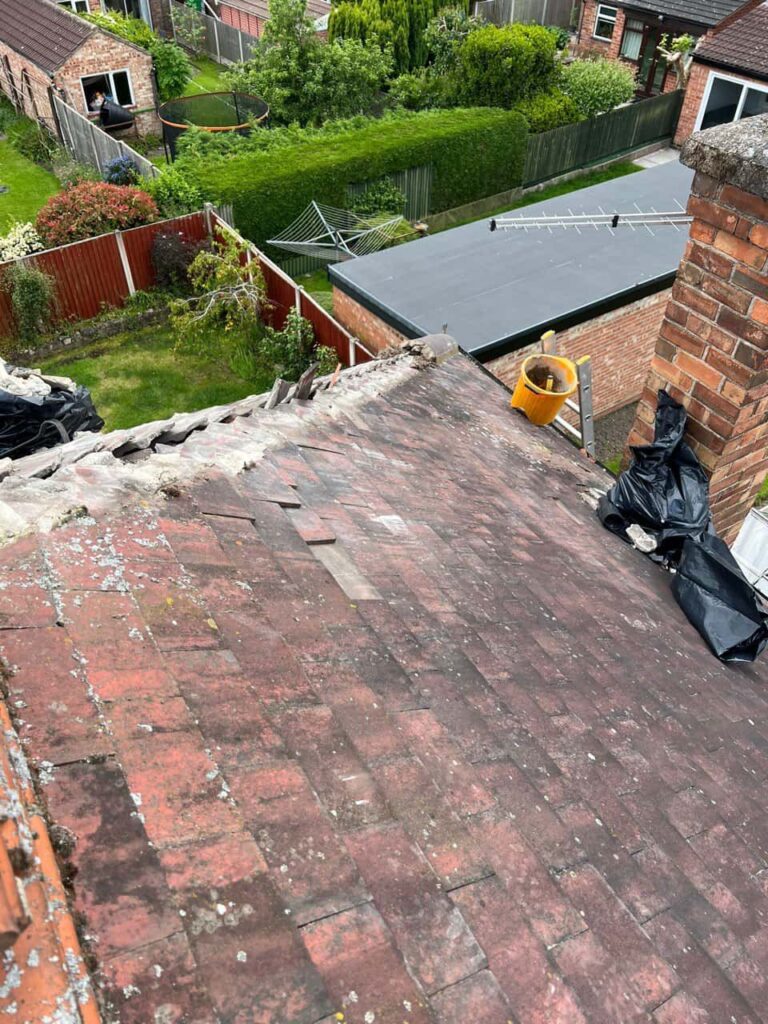Choosing the right roof for a countryside home involves more than just aesthetics. Homes in rural areas, like those in Furze Platt, Berkshire, must contend with a range of environmental factors, including harsh weather conditions, wildlife, and the need for energy efficiency. At LS Roofing Furze Platt, we help homeowners select the best roofing options that not only blend with the natural surroundings but also provide long-lasting protection and durability. In this blog post, we’ll explore the best roof types for countryside homes, considering both functionality and style.
1. Slate Roofs: Timeless Elegance and Durability
Slate roofs are a popular choice for countryside homes due to their classic appearance and incredible durability. They fit seamlessly into the rural aesthetic, complementing both traditional and modern country houses.
- Longevity: Slate roofs can last over 100 years with proper care, making them one of the most durable roofing materials available.
- Weather resistance: Slate is highly resistant to harsh weather conditions, including rain, snow, and wind. This makes it ideal for homes in exposed rural areas.
- Natural beauty: The natural stone appearance of slate blends beautifully with the countryside, adding character and charm to your home.
While slate roofs are more expensive upfront, their long-term benefits, including minimal maintenance, make them a wise investment for countryside properties.
2. Thatched Roofs: A Traditional Countryside Look
For a quintessentially English countryside aesthetic, thatched roofs offer a unique and traditional look. Though not as common today, they still feature on many older homes and can be a stunning choice for those wanting to maintain heritage charm.
- Natural insulation: Thatch is an excellent insulator, helping to keep homes cool in the summer and warm in the winter.
- Sustainability: Thatched roofs are made from natural, renewable materials such as straw or reeds, making them an environmentally friendly option.
- Heritage appeal: Thatched roofs add a rustic, charming appearance that suits historic cottages or homes aiming to replicate a traditional country feel.
However, thatched roofs do require more maintenance than modern alternatives, and homeowners need to be mindful of fire safety precautions.
3. Metal Roofs: A Modern, Eco-Friendly Solution
For homeowners seeking a more contemporary roofing option, metal roofs are gaining popularity in rural areas. Metal roofs offer a sleek, modern appearance while providing durability and environmental benefits.
- Durability: Metal roofs are highly resistant to extreme weather, including heavy rainfall, snow, and strong winds, making them a reliable option for rural homes.
- Energy efficiency: Metal roofs reflect solar heat, which can reduce cooling costs in the summer. When paired with proper insulation, they can also improve energy efficiency year-round.
- Low maintenance: Unlike thatched or slate roofs, metal requires minimal maintenance, which is ideal for homeowners seeking long-term solutions without regular upkeep.
Metal roofs come in a variety of colours and finishes, allowing you to choose a style that complements your countryside home while benefiting from modern roofing technology.
4. Clay Tiles: Classic and Weather-Resistant
Clay tiles are a versatile option for countryside homes, offering a combination of classic beauty and practical benefits. They have been used for centuries and are still a popular choice today for their durability and aesthetic appeal.
- Weather resilience: Clay tiles are highly resistant to severe weather conditions, including heavy rain and wind, making them an excellent choice for homes exposed to the elements in rural settings.
- Natural look: With a variety of earthy tones, clay tiles blend seamlessly with the natural landscape, giving your home a warm, rustic charm.
- Long-lasting: Clay tiles are known for their longevity, often lasting 50 years or more with proper maintenance.
Clay tiles can be heavier than other roofing materials, so it’s important to ensure your home’s structure can support their weight before installation.
5. Green Roofs: Embracing Sustainability in the Countryside
For environmentally conscious homeowners, green roofs offer an innovative way to integrate your home into the natural environment. Green roofs consist of layers of vegetation planted over a waterproof membrane, creating a living roof that supports local biodiversity.
- Eco-friendly: Green roofs contribute to environmental sustainability by reducing rainwater runoff, improving insulation, and providing habitats for local wildlife.
- Aesthetic integration: In the countryside, green roofs can blend your home into its surroundings, offering a visually stunning and eco-friendly solution.
- Energy savings: Green roofs provide natural insulation, reducing energy costs by keeping homes cooler in the summer and warmer in the winter.
While green roofs require more planning and maintenance, they are a fantastic choice for homeowners looking to minimise their environmental impact and enhance their property’s natural beauty.
Conclusion
Choosing the right roof for your countryside home depends on balancing aesthetics, durability, and practicality. Slate and clay roofs provide timeless charm and long-lasting performance, while metal roofs offer modern durability with low maintenance. For those looking to embrace tradition, thatched roofs bring a heritage feel, while green roofs offer sustainable solutions for the environmentally conscious.
Call us on: 01628 562 691
Click here to find out more about LS Roofing Furze Platt
Click here to complete our contact form and see how we can help with your Roofing needs.

